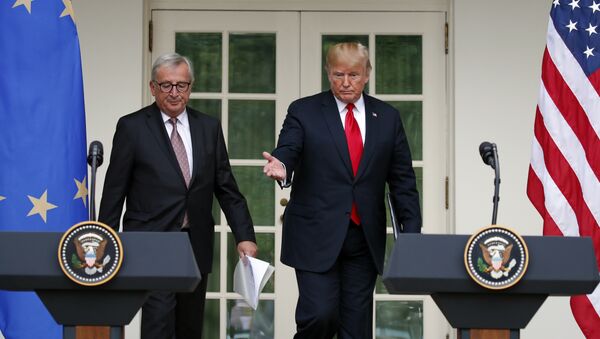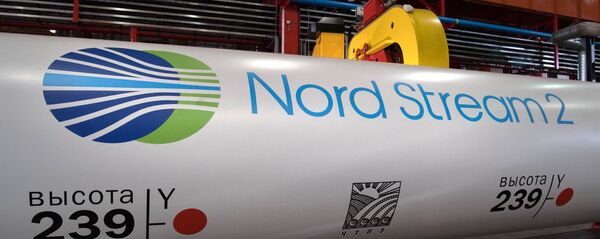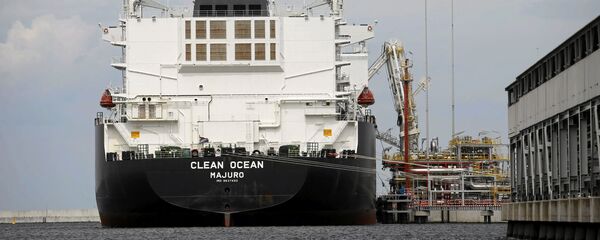According to the German news magazine, even though Berlin and other European powers committed to buying more US LNG in mid-2018, the threat of punitive tariffs on the European automotive industry "continues to float in the air", with President Trump effectively succeeding in bringing Brussels to heel despite having a weak set of cards to start.
"The mere threat of new car tariffs in the summer of 2018 was enough to bring the European Commission to its knees," Focus guest author Gabor Steingart wrote, recollecting President Jean-Claude Juncker's meeting with Trump in Washington last July to commit to expand imports of US LNG to Europe in the interests of "diversification."
"Although Daimler, Volkswagen, BMW and their suppliers in the US employed around 118,000 people and produced around 750,000 cars in 2018, Europe played defensively" in response to Washington's automotive tariffs threat, the journalist recalled.
Trump's strategy paid off, according to Steingart, with US LNG exports jumping a whopping 272 percent in April year-on-year, with the uptick taking place immediately following the July Juncker-Trump meeting. According to CNN Business, the EU has imported about 8 billion cubic meters of LNG from the US since July, which was over three times more than the total purchases made in the preceding two years. In 2018, the US earned $800 million on LPG exports to Europe, with the EU spending another $250 million on US gas in the first three months of 2019.
This week, US Energy Secretary Rick Perry pitched US LNG supplies as being superior to Russian pipeline gas, saying they were more "reliable" despite being more expensive.
"If just the cheapness of the supply is all you care about then you would not buy a BMW or a Mercedes-Benz or one of the fine automobiles that come out of the European Union," Perry said, speaking at a press conference alongside EU energy commissioner Miguel Arias Canete on Thursday.
During the press conference, Perry again took aim at Nord Stream 2, and urged Germany to commit to the construction of more LNG terminals.
Perry's remarks were echoed by US Ambassador to Germany Richard Grennell, who warned this week that Germany companies involved in the Nord Stream 2 project face a "high sanction risk" for doing business with Russia.
Commenting on this high-stakes game of energy poker, Steingart complained that "by the looks of things, Europe and Germany are not just playing defensively, but have already revealed their hand. They talk partnership, but mean surrender," the journalist concluded.
Europe purchases roughly half of its natural gas supplies from Russia, with the 2017 BP Statistical Review of Energy saying Russian supplies contributed 300 billion cubic meters of the continent's 605.6 billion cubic meter gas consumption in 2016. Until recently, LPG supplies made up less than 10 percent of the EU's consumption, with Qatar and Algeria making up the majority of these supplies, and the US accounting for just 0.5 billion cubic meters of European LPG imports.





